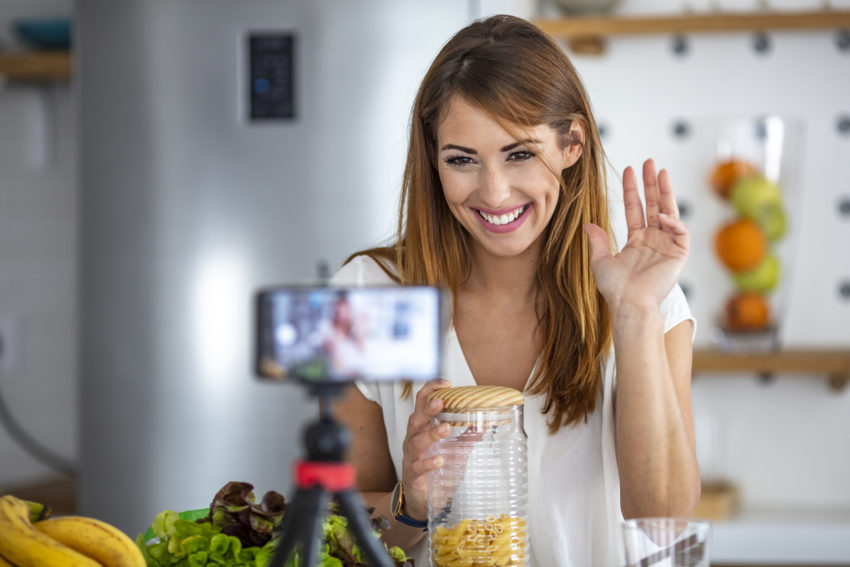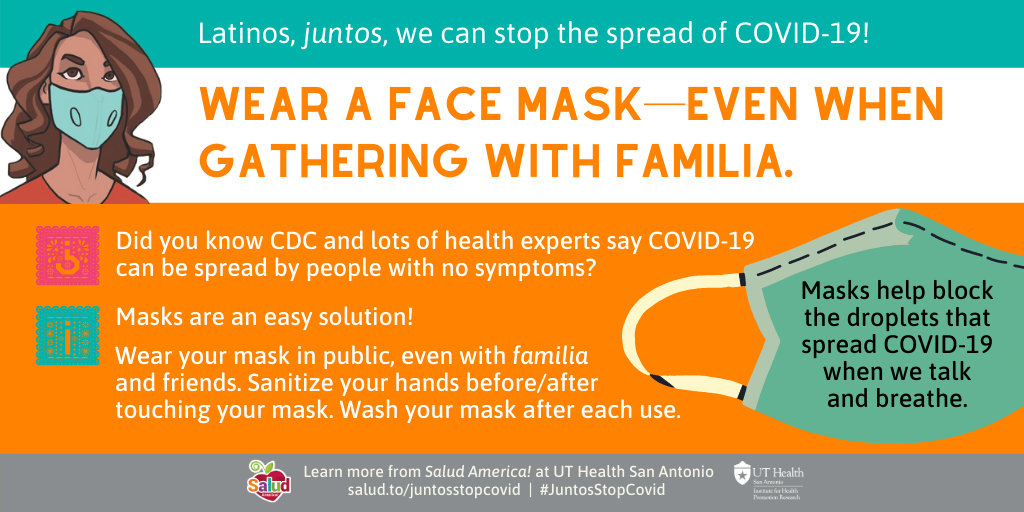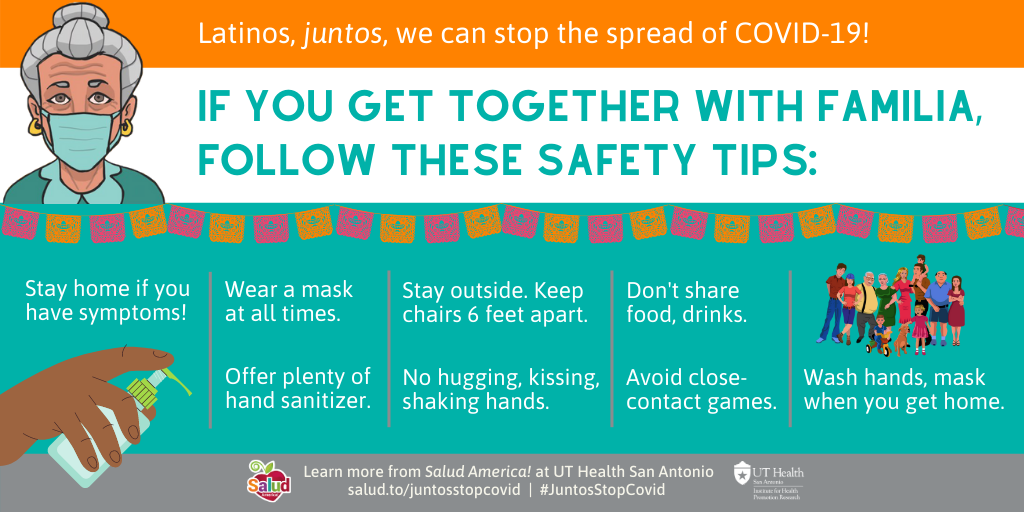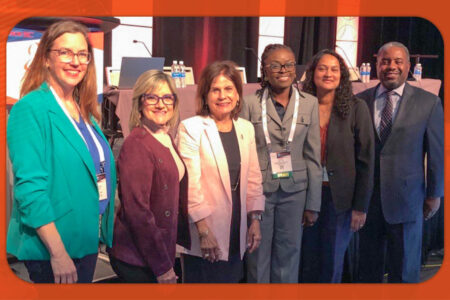
Share On Social!
The Thanksgiving and Christmas holidays are a wonderful time to express your gratitude and share food with the people you love most in this world.
However, the 2020 hits just keep coming.
Family gatherings are still not safe during the COVID-19 pandemic. The CDC discourages in-person family gatherings for the holidays.
Instead, you can safely deliver/swap traditional dishes to nearby familia, ship gifts, and use a video conference to stay connected.
“It is the holidays, but it’s also a global pandemic. Safety has to be a priority over tradition,” said Dr. Amelie G. Ramirez, director of the Salud America! Latino health equity program at UT Health San Antonio.
See our “Juntos, We Can Stop COVID-19” bilingual campaign to encourage you─juntos/together─ to do your part to slow the spread of COVID-19.
UPDATE Nov. 13: 134,078. That was the 7-day average for COVID-19 cases in the US on Nov. 12. The 7-day average peaked in July at 66,784.
UPDATE Nov. 12: See examples below of what to say to reject or cancel holiday plans.
If you are not willing to skip holiday get-togethers this year, consider the following precautions to lower the risk of spreading COVID-19, which is impacting Latinos.
1. Navigating the Discussion
The spectrum between following rules and taking risks is not black-and-white. It is broad and gray.
People have different comfort levels with everything from masks to large public gatherings, thus have different boundaries.
Keeping friends and family from feeling insulted or judged can be a challenge while you have “the COVID talk” and establish your boundaries, particularly around the holidays.
Rather than focus on the holiday gathering, focus on the relationships.
The goal is not the food or the party. The goal is sharing, connecting, and nourishing relationships.
You can continue to nourish relationships without in-person celebrations.
2. Keep the Guest List Local
Gatherings with attendees who are traveling from different places pose a higher risk than gatherings with attendees who live in the same area.
Consider using this event risk assessment planning tool to find out the risk of attending an event in the county where you live, where the host lives, and where other guests live.
Developed by the Georgia Institute of Technology, the tool provides the estimated chance that at least one COVID-19 positive individual will be present at an event, given the size of the event, from 10 to 10,000 people. As of Oct. 29, 2020, below is the risk estimate that at least once COVID-19 positive individual will be present at an event with 25 people in the following counties:
- 42% in Denver County, Colorado
- 60% in Mobile County, Alabama
- 80% in Brown County, Wisconsin
- 88% in El Paso County, Texas
If you live in and/or decide to include guests from a high-risk county, you should take the following the rest of the items in this list even more seriously.
“We also urge everyone to get their flu shots,” said Dr. Jason Bowling, associate professor of medicine in the Joe R. and Teresa Lozano Long School of Medicine at UT Health San Antonio, and director of epidemiology at University Hospital.
The holidays are important, but we are living in a global pandemic. Latinos are 4.5 times more likely to be hospitalized with COVID-19 than their white peers.
3. Keep the Guest List Short
The 10-person limit per gathering is difficult when it comes to familia on a holiday, but the more households you bring together, the more you increase your risk of spreading the disease.
To reduce the guest list, consider splitting one big event into separate smaller events.
You can prepare and safely deliver/swap traditional dishes to family at these separate events. You can use a video-chatting platform to stay connected during the meal and televised football games and parades.
 Determining a limit on the number of guests to invite depends on the host’s ability to seat households separately and to seat individuals six feet apart, preferably outdoors. Outdoors is lower risk than indoors.
Determining a limit on the number of guests to invite depends on the host’s ability to seat households separately and to seat individuals six feet apart, preferably outdoors. Outdoors is lower risk than indoors.
People diagnosed with COVID-19, waiting for COVID-19 test results, or at increased risk of illness from COVID-19 should not attend in-person holiday celebrations.
Spending time with family is important, but U.S. reported the five highest days of coronavirus cases between Oct. 28 and Nov. 2. Updated Nov. 4.
4. Agree to Quarantine Before and After Each Holiday
Ask the host and all guests to stay home for 14 days before the holiday.
You want to avoid anyone bringing coronavirus to Thanksgiving, Christmas, or New Year’s.
If someone can’t work from home, ask them to be extra vigilant about wearing a mask, washing their hands, and maintaining 6 feet physical distance form others while at work.
Whether working from home or not, everyone should avoid public places and get-togethers before your holiday.
Also, ask the host and all guests to stay home and avoid all public places and get-togethers for 14 days after each holiday to avoid spreading coronavirus after the holiday.
It is the holidays, but 43 states had an increase in cases the fourth week in October compared to the third week.
5. Agree to Cancel if You Have Symptoms
Ask the host and all guests to agree to monitor for symptoms during the 10 days before the holiday and agree to cancel if they or anyone in their household experiences symptoms during that time.
Symptoms include fever, cough, and shortness of breath but other symptoms may be present as well. Trouble breathing is a more serious warning sign that you need medical attention.
2020 has been a rough year, but the holidays are not an excuse to ignore a global pandemic.
6. Agree to Avoid Hugging, Kissing, and Shaking Hands
Ask the host and all guests to agree to avoid physical contact, like hugging, kissing, and shaking hands with people outside their household.
Like birthdays, graduations, and other celebrations over the past eight months, we must continue making modifications.
Physical connection is important, but on Oct. 29, 17 states reached record COVID-19 hospitalizations based on a seven-day average.
7. Agree to Wear a Mask, Maintain Six Feet Distance, and Wash Hands Regularly
Ask the host and guests to agree to properly wear a mask unless eating or drinking; to maintain six feet distance from others not in their household; and to wash their hands regularly.
At a family gathering that brought together over 24 family members from several households, none of them wore masks. Fourteen people from four households contracted COVID-19 at the gathering. But before they had symptoms, they continued with their daily lives, spreading COVID-19 to another 27 people in five different households and eight different workplaces.
Ask the host to ensure bathrooms are stocked with liquid soap and disposable towels. Ask guests to bring their own hand sanitizer. In case they forget, also ask the host to set out hand sanitizer.
 COVID-19 won’t be taking a break for the holidays.
COVID-19 won’t be taking a break for the holidays.
8. Agree to Set up Tables Outside and Stay Outside as Much as Possible
Ask the host to set up chairs and tables outside and to limit gathering indoors. Ask everyone to agree to stay outside as much as possible.
For seating arrangements, consider setting up different tables for each household.
For people from different households, place chairs six feet apart.
Though you may need to move chairs closer to eat at the table, as soon as people are done eating, spread the chairs back out.
If you have to meet inside, open doors and windows to increase air circulation.
COVID-19 cases are growing by 5% or more in 45 states, as of October 30.
9. Agree to Limit Shareable and Finger-foods
Ask the host and guests to agree to some precautions when planning the menu and serving style.
Considering having guests bring food and drinks for themselves and members of their household only.
If you will be doing more of a potluck style, consider these precautions:
- Wear a mask while preparing food for others who don’t live in your household.
- Limit people going in and out of the areas where food is being prepared or handled.
- Skip appetizers and self-serve food options to avoid cross-contamination and gathering around food.
- Skip dishes you eat with your fingers, like chips and salsa, veggie trays, rolls, and cheese platters to avoid people putting their fingers in their mouth.
- Wear a mask and gloves when handling and transporting food.
- Provide single-serving drinks and single-serving condiments and seasoning to avoid multiple people touching the same bottle, pitcher or container.
- Use disposable utensils, dishware, cups, and napkins.
- Skip buffet and round robin to limit the number of people breathing on each dish and touching each serving spoon.
- Each household should have a separate food/drink table with their own dishes, serving spoons, condiments, and disposable utensils, dishware, cups, and napkins.
- If households are not at their own table, consider having one or two people serve all of the guests while wearing gloves and a mask.
As soon as anyone in your household returns home, ensure they wash their hands and mask.
The holidays are upon us, but the positivity rate is greater than 10% in roughly 15 states as of Oct. 30.
Learn more about reducing risk during holiday celebrations from the CDC.
Our team at Salud America! at UT Health San Antonio created this “Juntos, We Can Stop COVID-19” bilingual campaign to encourage you─juntos/together─ to do your part to slow the spread of COVID-19 in all aspects of our daily lives.
From skipping get-togethers with la familia to wearing a mask and physical distancing, we can reduce the spread of this raging virus.
“We still need to do all the things we have within our power to protect our health and that of our family. That includes wearing a mask, even when around extended family,” Ramirez said. “That includes skipping gatherings when possible, and at least making sure we’re being safe at small get-togethers. Also, knowing what to do if we’re exposed to the virus or test positive.”
UPDATE 11/12/2020: Examples of what to say to reject or cancel holiday plans:
- “I would need to quarantine and get tested before I go and once I’m back, and we would all be stuck at the house the whole time I’m there. While I would normally make that type of sacrifice for my family over the holidays, it still wouldn’t be enough to eliminate all risk. It feels too risky to take so much effort and time off work when we could still transmit the infection.”
- “I have already sacrificed a lot to protect my community by staying home and avoiding gatherings for the past six months. As much as I really want to spend time with you all, especially during a holiday, I am just not willing to travel and endanger my family’s health right now.”
- “I have read too many stories about small family gathers resulting in clusters of cases. Even the CDC says that an increasing number of COVID-19 cases are being traced to family gatherings. I am not comfortable getting together while so many people are still being hospitalized and dying from COVID-19.”
- “This is a very difficult decision because now more than ever I want to celebrate with my family. However, the holidays are already the busiest time to travel making them the riskiest time to travel during a global pandemic. It would be selfish of me to expose you all to that sort of risk right now.”
- “Even if we quarantine before the holiday and are diligent about wearing masks and keeping six feet distance during the holiday, it still won’t be a normal holiday. Trying new traditions this year will feel like less of a bummer than a diluted version of our normal traditions.”
By The Numbers
23.7
percent
of Latino children are living in poverty



